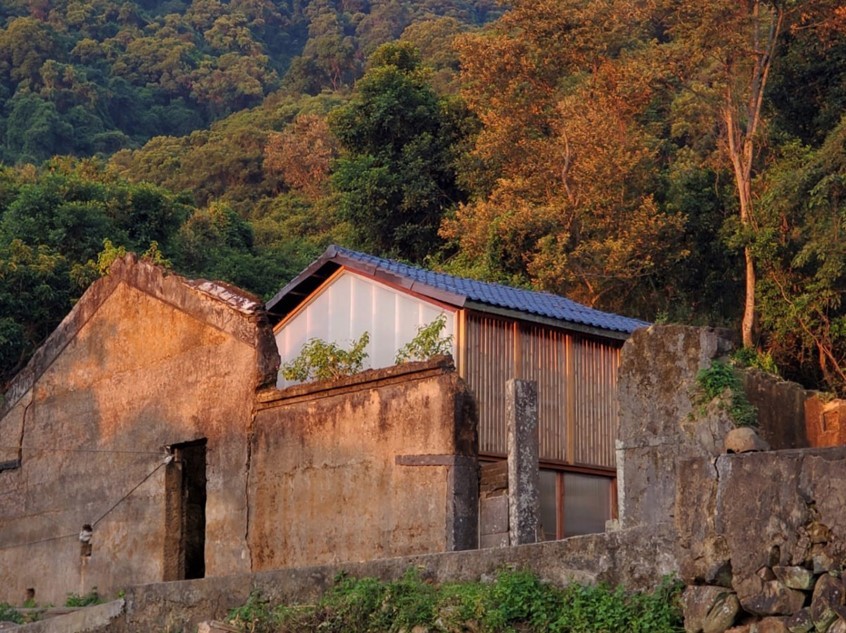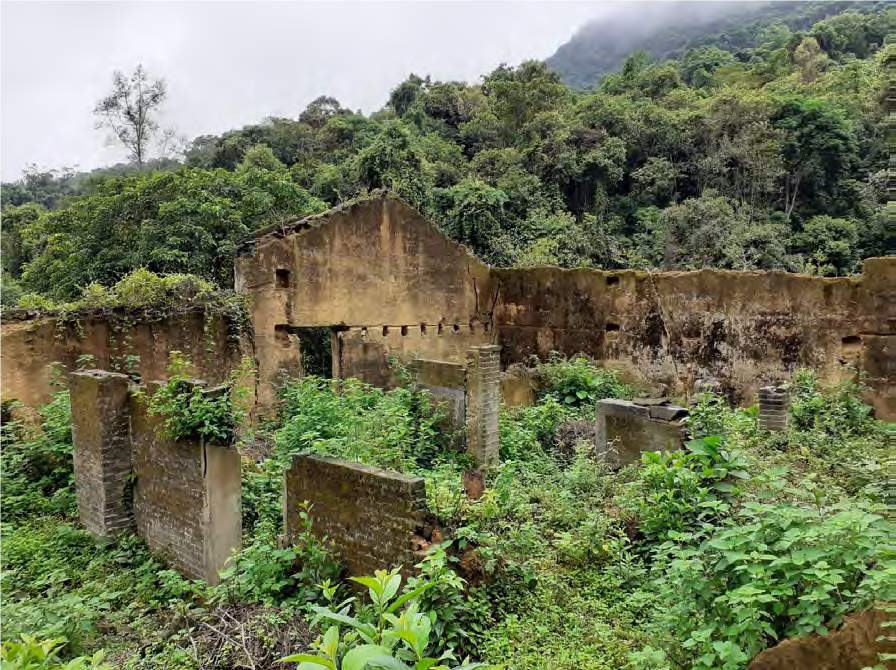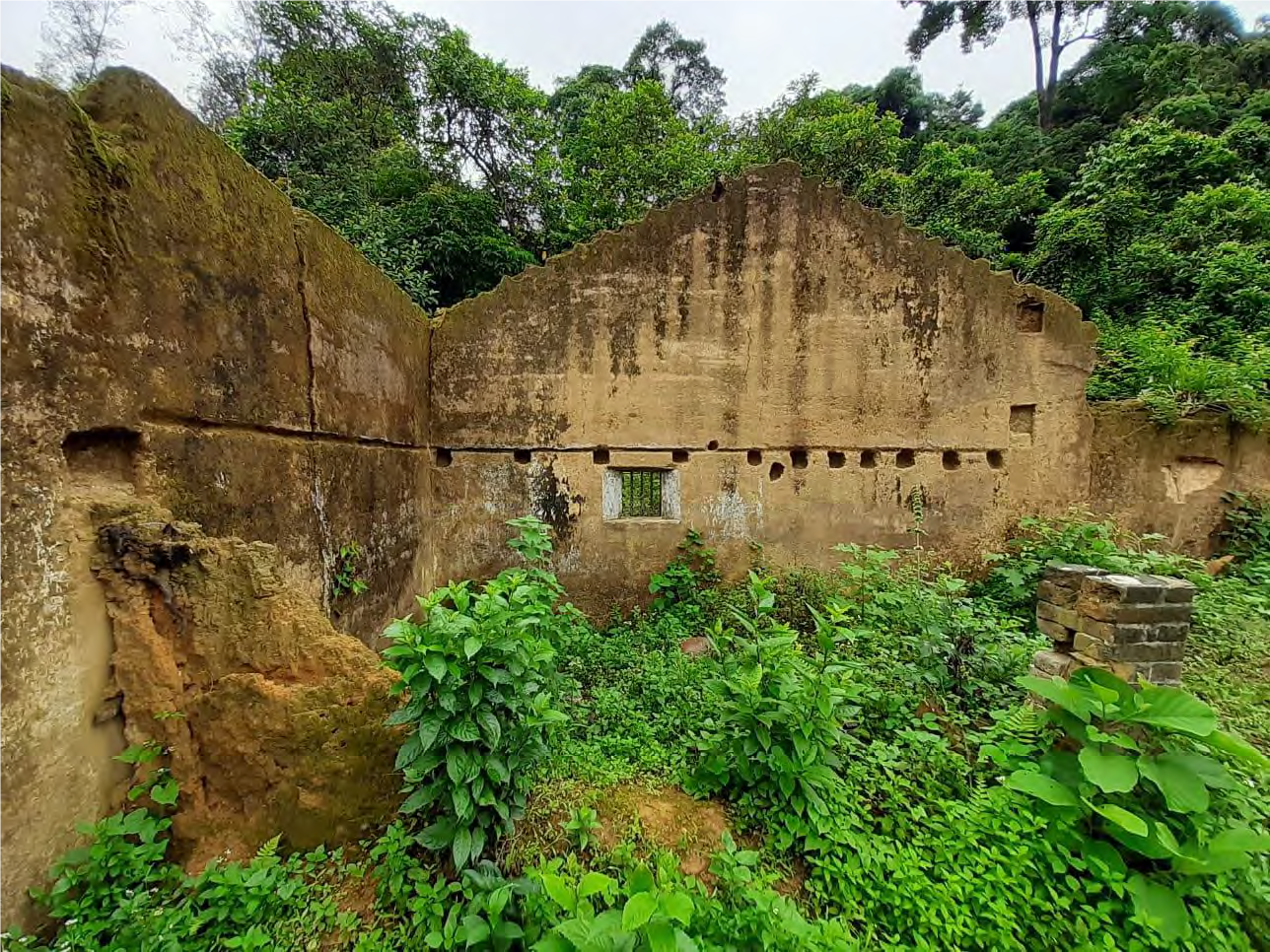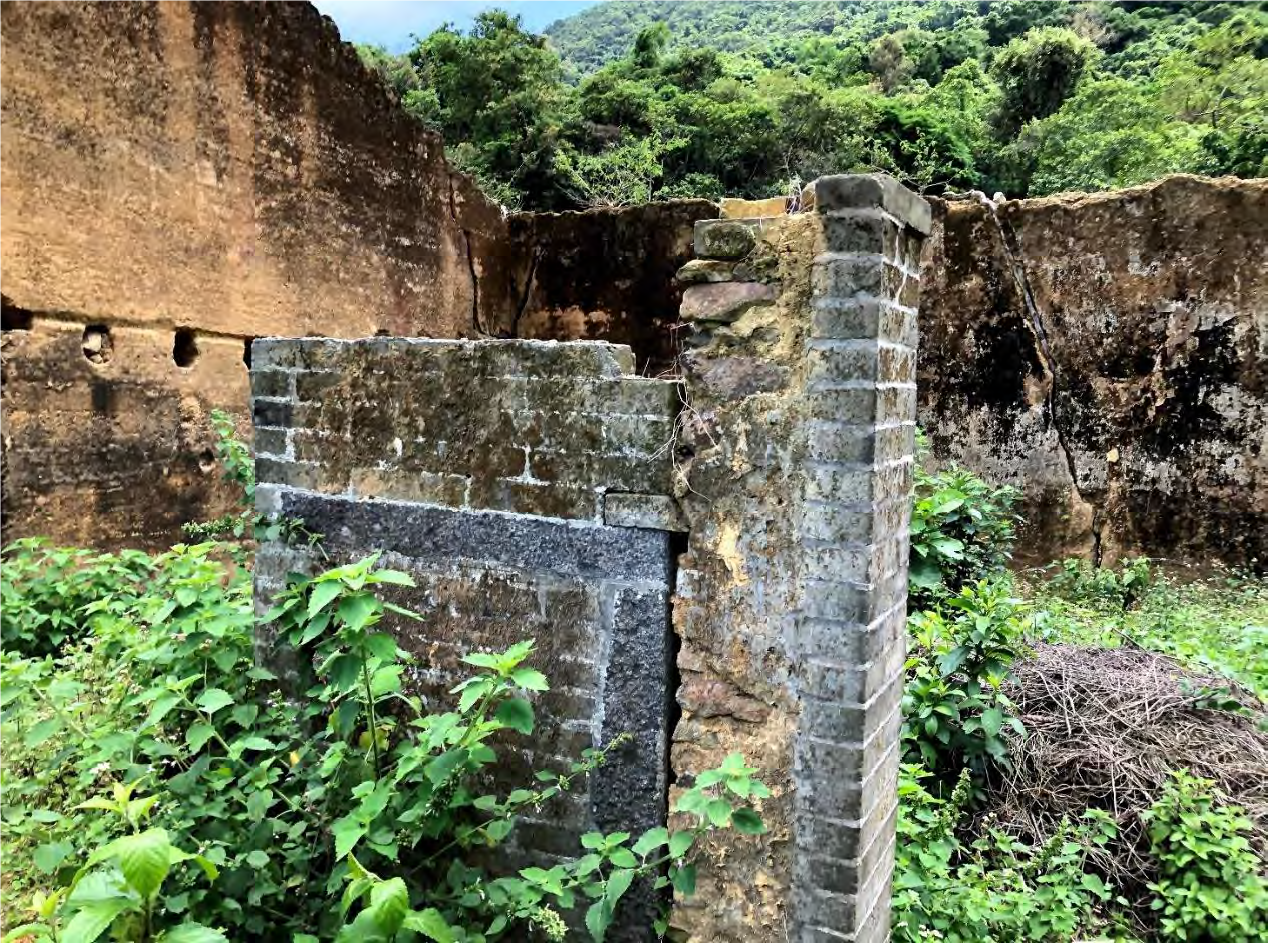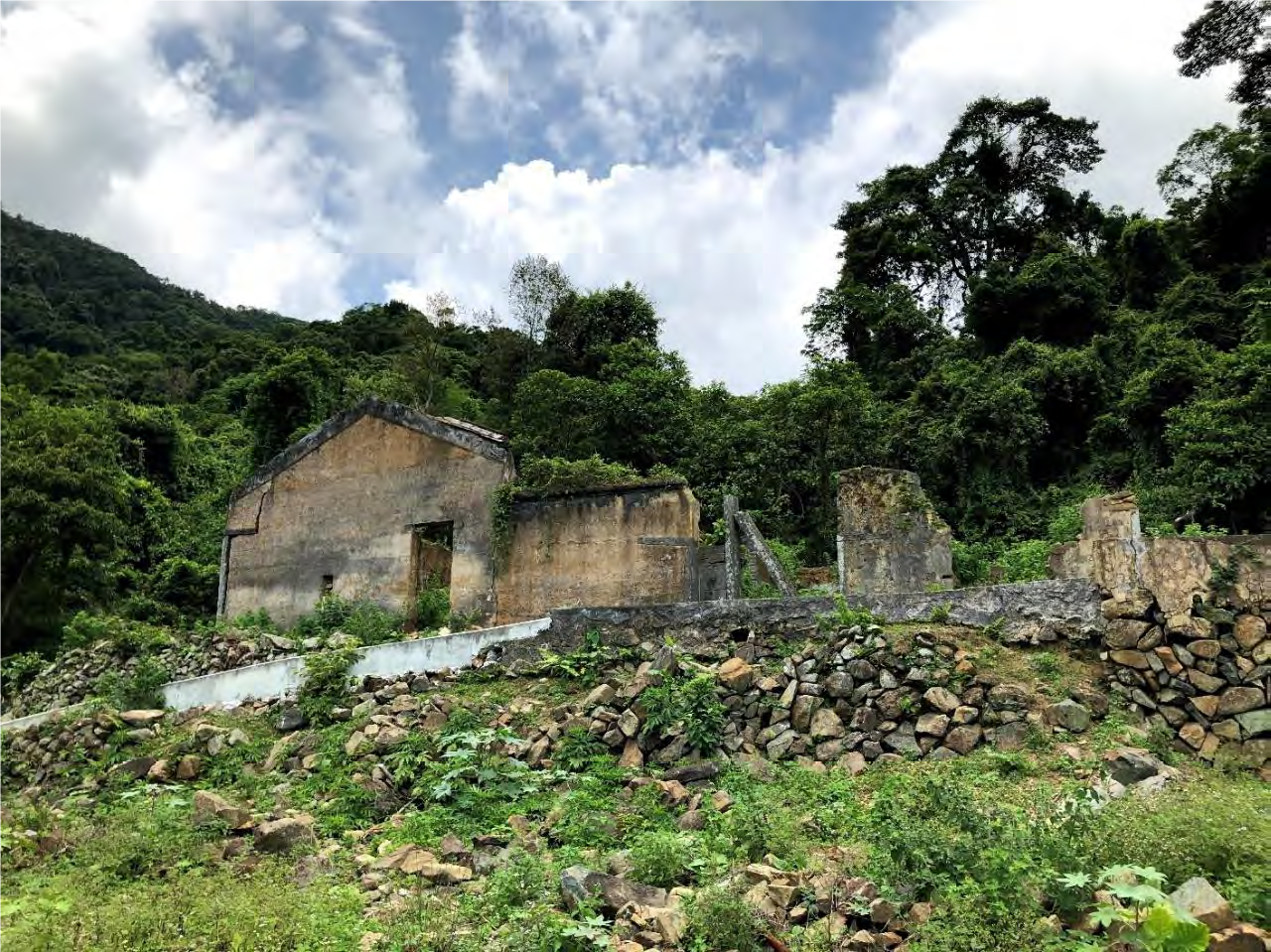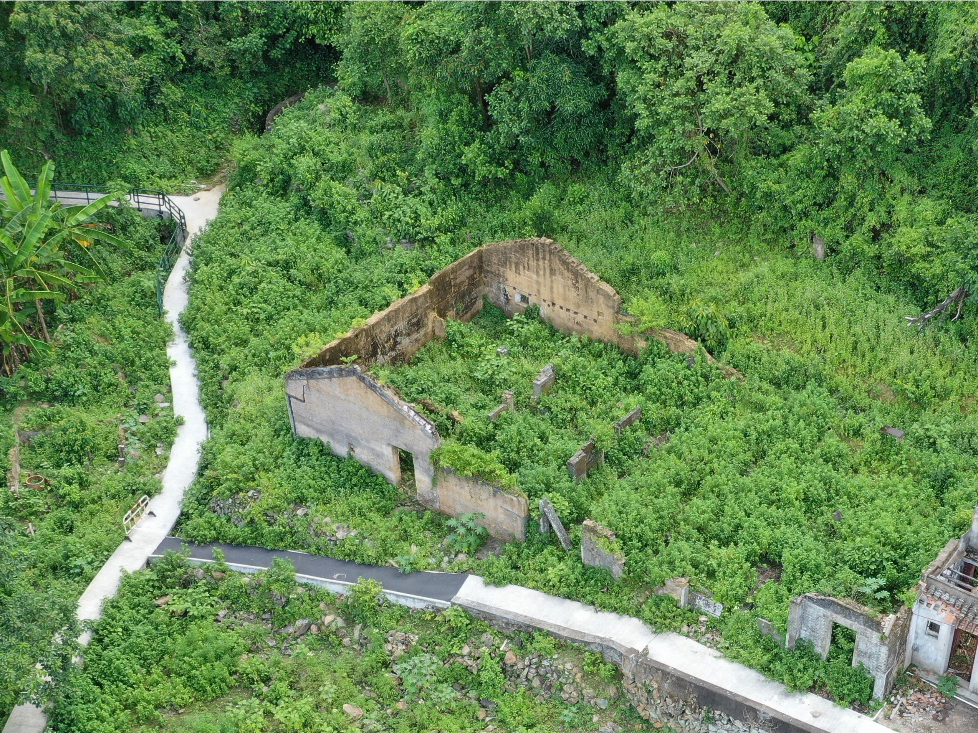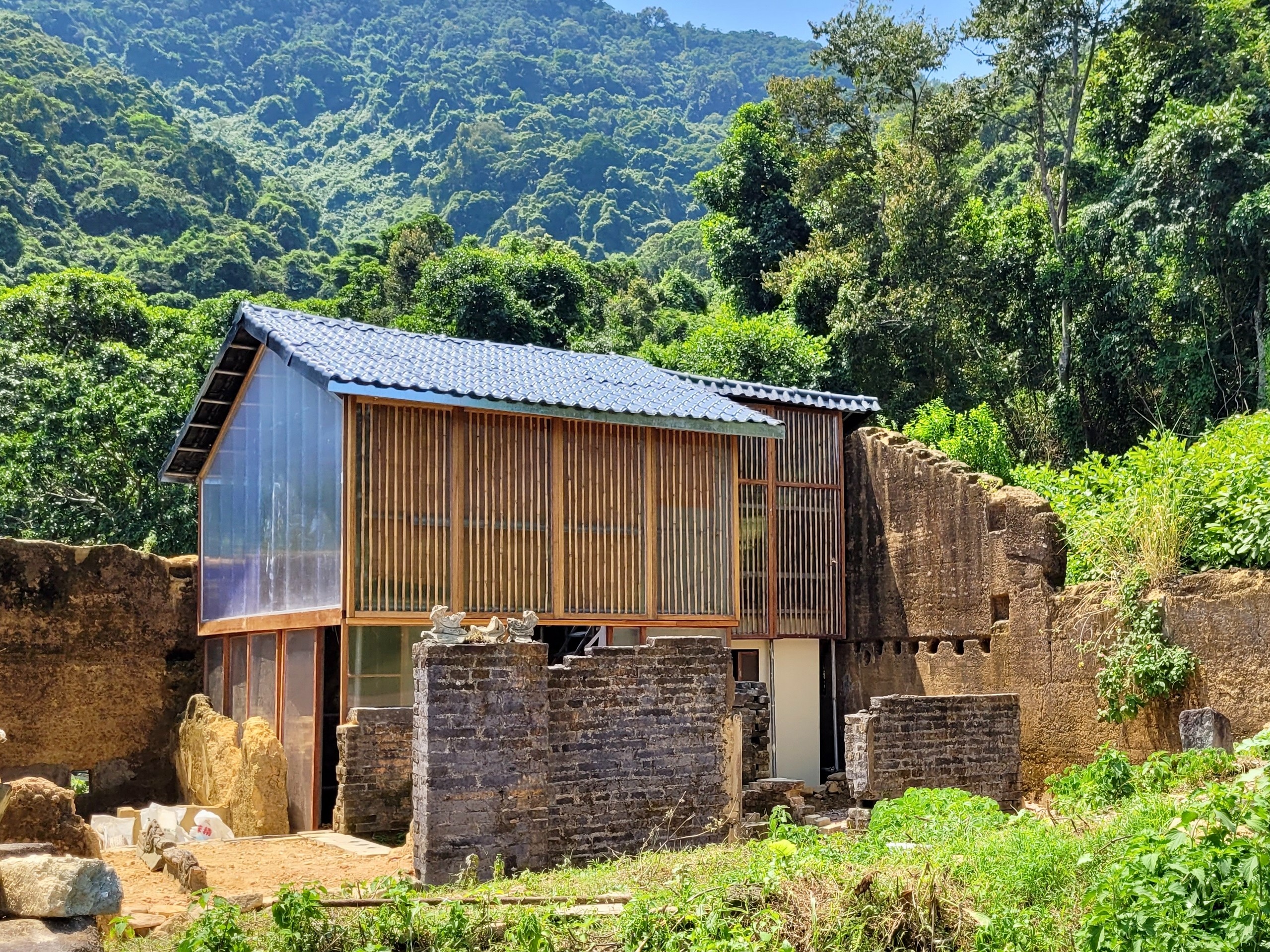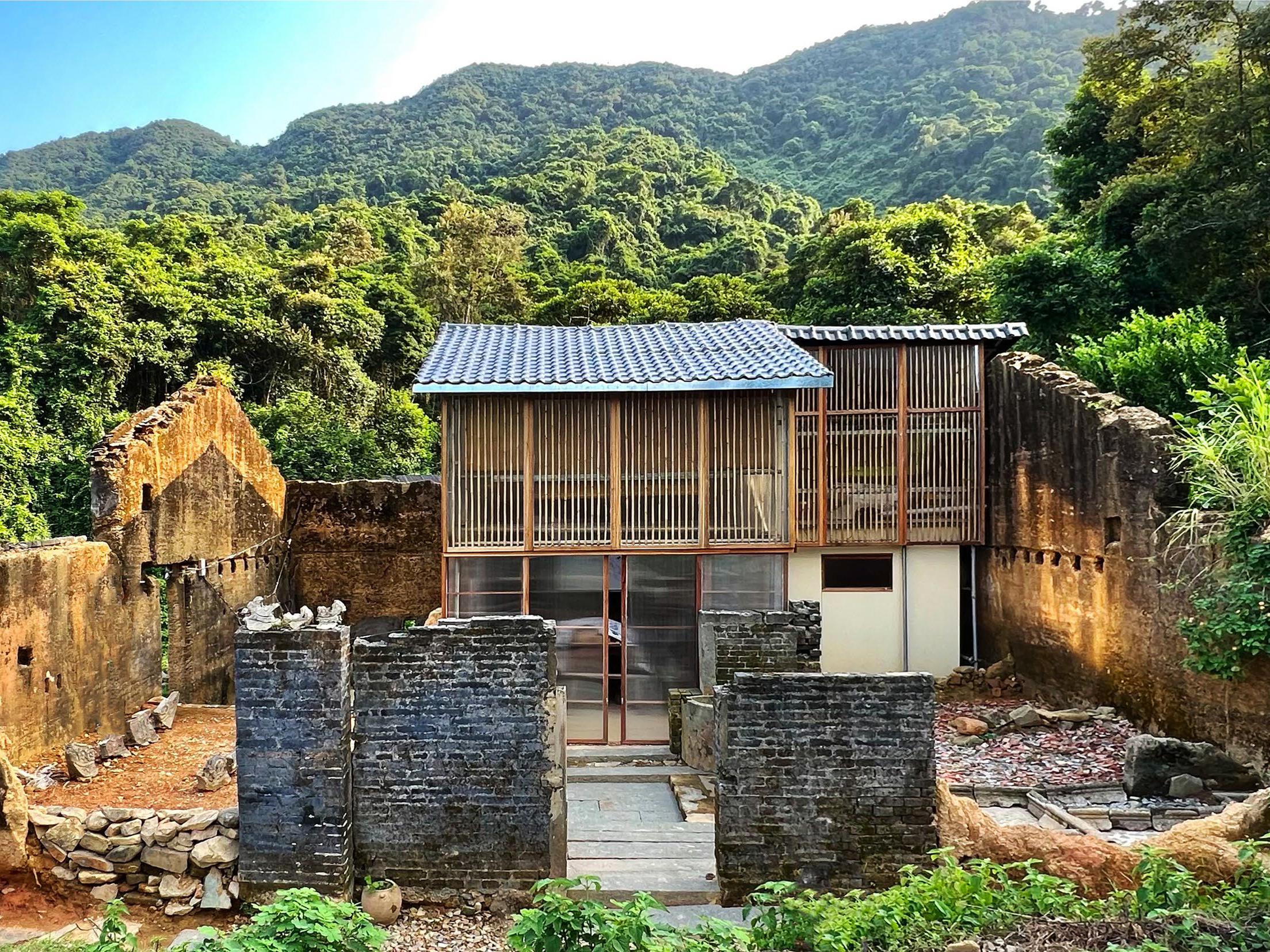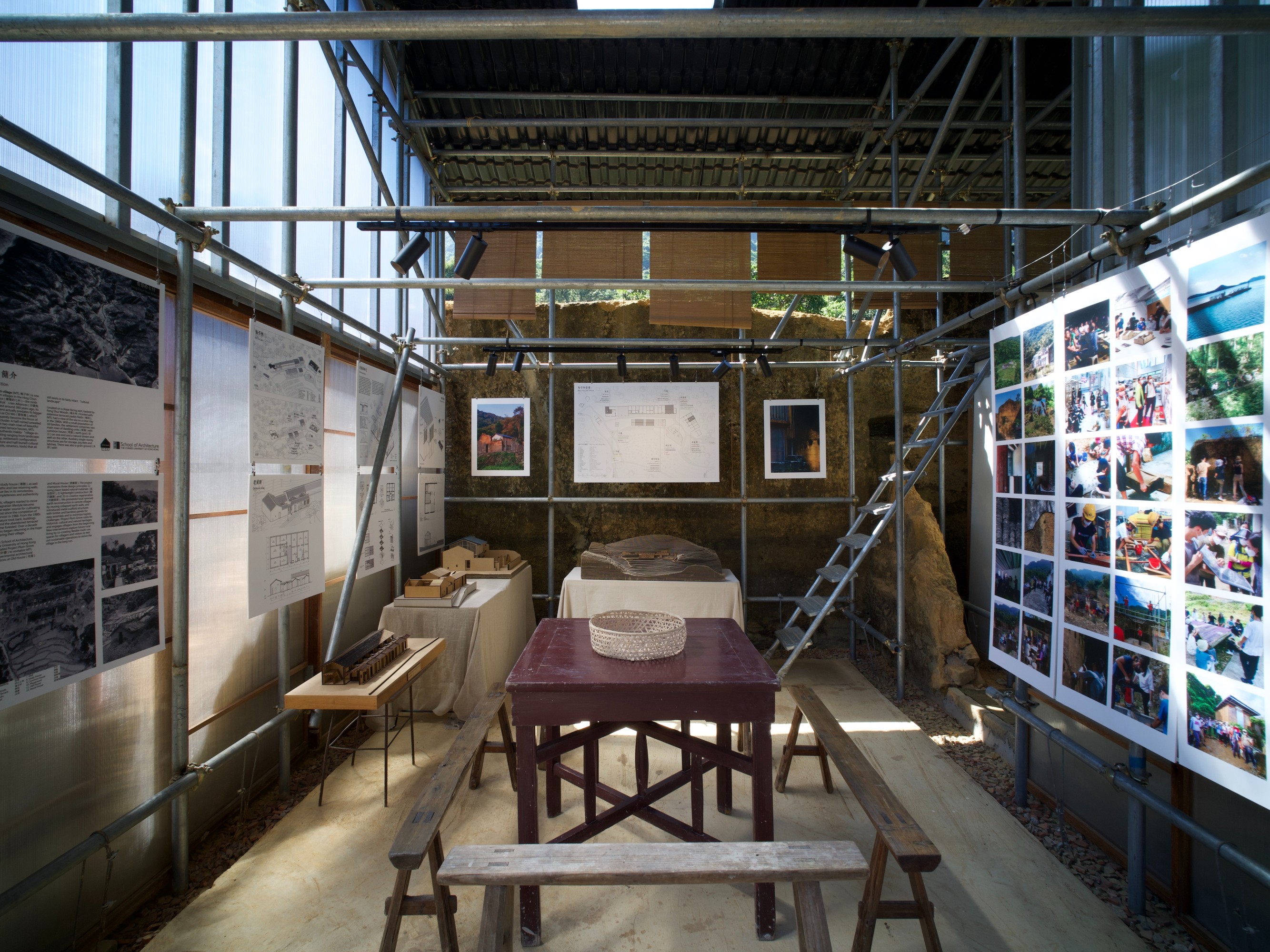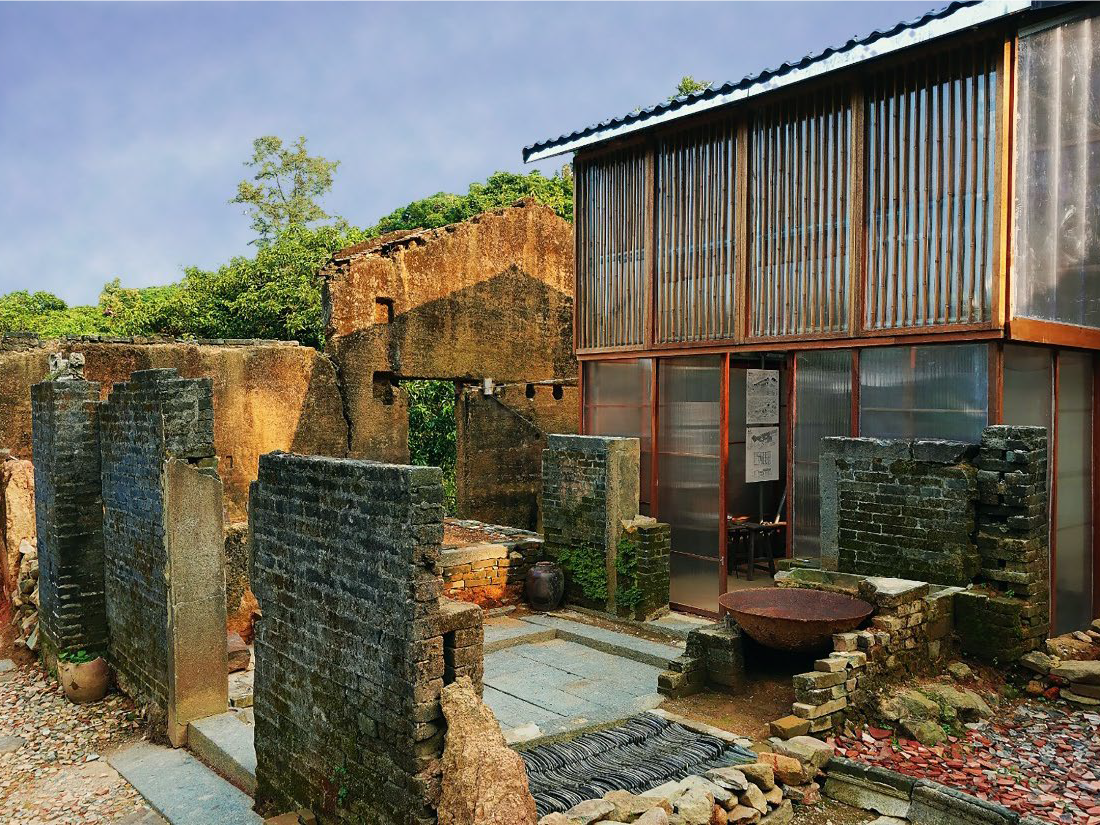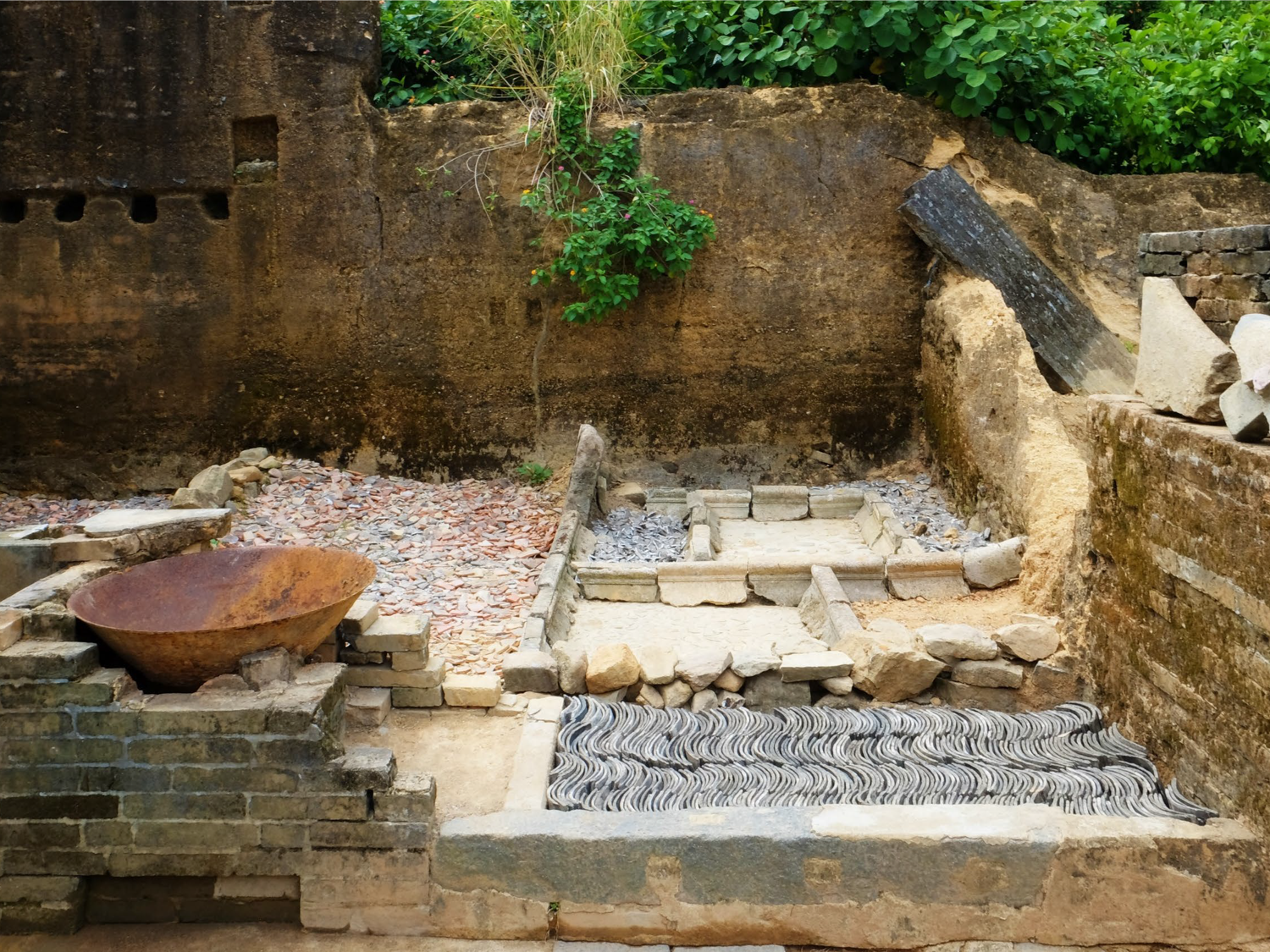Project Plum Grove: Restoration of the Hakka Cultural Landscape of Mui Tsz Lam
Mui Tsz Lam village is situated in the north-eastern part of the New Territories, with around 400 years of history. The Hakka cultural landscape is well preserved in the village as seen in its topography, master layout, and architectural style. The two rows of village houses are built on the hillscape, with terraced farmland in the front and a large piece of feng shui forest at the back. During its heyday, there were 16 families of some hundred villagers. Due to the shortage of potable water and the decline of agriculture, in the 1970s, the villagers started to move to other places, such as the downtown areas or even to foreign countries in the west, until the 1980s, when there were no villagers living in the village.
Before the restoration works, the Old House was overgrown with weeds and only part of the rammed earth wall and brick wall remained, while other parts of the building, such as the roof and structural elements, had collapsed due to the lack of regular maintenance. There are 3 guiding principles in this restoration work, namely the “use of local materials”, “lightweight architecture”, and “collaboration”. With the combination of modern rammed earth technique and traditional construction methods, the project team repaired and strengthened the external walls by the brick, tiles and clay collected in the village, and also reconstructed the collapsed parts with lightweight and flexible temporary materials that integrated with the original building without bringing adverse impact to the structure of the Old House.
Through the combination of modern techniques and indigenous knowledge, the project restored this built heritage in a community-based approach that, on one hand, conserves the cultural assets, and brings vibrancy to the local community on the other.
 Home
Home






